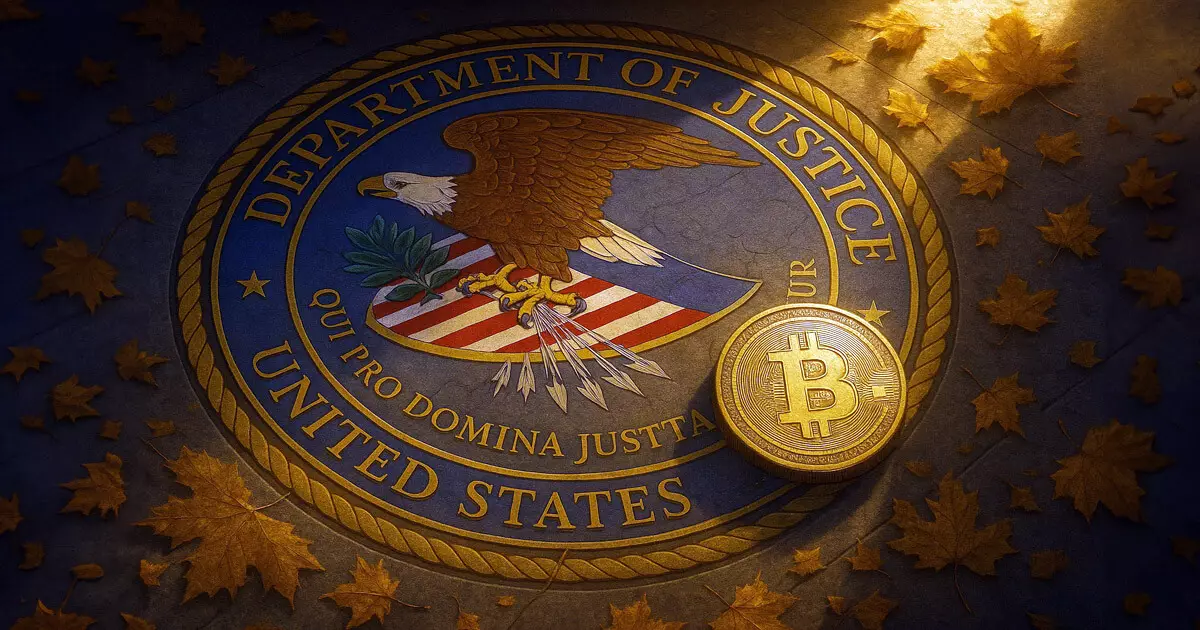In a glaring display of oversight, the U.S. Department of Justice (DOJ) has begun reevaluating how victims of digital asset fraud receive compensation, confronting the stark reality that many investors have been left high and dry following high-profile platform collapses. A recent DOJ memo has exposed the shocking truth: compensation has largely been calculated based on the initial valuation of assets at the time claims were filed, rather than adjusted to reflect the volatile but significantly increased market rates of those assets today. This leaves many victims, especially those caught in the debacle of bankruptcies like FTX or Celsius, receiving a pitiful fraction of what they would have otherwise obtained had they been allowed to retain their holdings.
Imagine having invested in Bitcoin when it was valued at a mere $20,000, only to see it skyrocket above $108,000 within just over a year. Yet victims of these collapses are receiving measly payouts that reflect outdated valuations, robbing them of the potential gains accrued during a bullish market. Frustration mounts as victims realize that the crude application of these outdated methods amounts to a betrayal of their investment—an affront to the risk they undertook in an already volatile market.
Victims Left Stranded in the Wake of Fraud
It’s essential to understand that while not all digital asset bankruptcies stem from malicious intent, many investors have undeniably suffered due to theft or fraud. The DOJ’s admission that this compensation scheme flat-out denies victims the upside of appreciating assets illustrates a disconcerting disregard for the evolving landscape of digital currencies. The core issue remains: why is a system built for traditional financial instruments being imposed on a rapidly evolving digital frontier?
Activists and advocates like “Mr. Purple,” a vocal proponent for FTX creditors, have rallied for urgent reform, specifically calling for digital assets to gain legal recognition akin to conventional financial instruments within bankruptcy laws. It’s a perspective that demands respect and acknowledges the inherent characteristics of digital currencies—characteristics that traditional financial frameworks simply don’t cover.
Regulatory Shortcomings and a Reactionary Approach
It’s painfully clear that current regulatory frameworks are ill-equipped to deal with the complexities of digital assets. The DOJ has acknowledged as much, indicating that their hands are tied by outdated regulations that limit recovery strictly to the dollar value at the time of the fraud. This underscores a larger systemic issue: why are we still operating under antiquated models that don’t accommodate the realities of crypto markets?
The DOJ’s recent decision to disband its National Cryptocurrency Enforcement Team (NCET), which was initially established to probe into crypto-related crimes, adds another layer to the conundrum. While one might argue that this decision reflects a shift towards focusing on clear criminal activities such as scams and manipulation, it also signals a retreat from proactive engagement in an industry rife with uncertainty and risk.
Political Commitments and the Future of Digital Asset Regulation
In light of these revelations and challenges, the DOJ has stepped forward to cooperate with President Trump’s Working Group on Digital Asset Markets. Under Executive Order 14178, this initiative aims to thoroughly assess the regulatory landscape of crypto assets, reflecting a political commitment to adapt to the digital age. As the DOJ gears up to draft proposals aimed at providing enhanced protections for investors, there’s a glimmer of hope; yet skepticism remains.
There’s a critical tension in navigating the regulatory environment, where well-meaning efforts often clash with the harsh reality of market innovations outpacing legislation. America’s financial framework must evolve to prioritize clarity for digital asset marketplaces, where uncertainty can lead to catastrophic financial fallout.
While a responsive regulatory environment is essential for the preservation of investor rights, it’s evident that a truly proactive approach requires imagination and flexibility—qualities that often get lost in bureaucratic red tape. The urgent reforms demanded by victims are not merely bureaucratic adjustments; they represent a profound recalibration toward recognizing digital assets in their own right. With the way things stand, it seems a largely uphill battle that could leave many behind as the leaders of tomorrow attempt to navigate the intricate world of digital finance.















